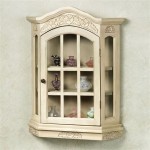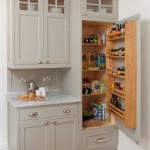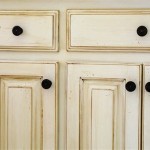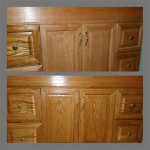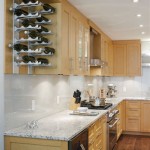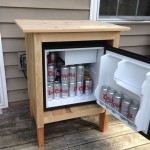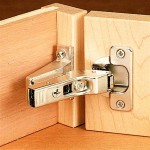What Are The Parts Of A Kitchen Cabinet Called In Spanish?
Kitchen cabinets are fundamental components of any kitchen, providing storage and contributing significantly to the overall aesthetic. Understanding the specific terminology for different parts of a kitchen cabinet, particularly in Spanish, can be invaluable for homeowners undertaking renovations, working with Spanish-speaking contractors or designers, or simply seeking a deeper understanding of their kitchen's construction.
This article will provide a comprehensive glossary of kitchen cabinet parts, outlining each component in English and its corresponding translation in Spanish. This knowledge will facilitate clear communication and prevent misunderstandings during the design, construction, or repair phases of a kitchen project. We will focus on the most common types of kitchen cabinets, including base cabinets, wall cabinets, and tall cabinets, and their respective components.
Essential Components of a Kitchen Cabinet and their Spanish Translations
The anatomy of a kitchen cabinet involves a variety of components, each serving a specific function. Familiarity with these parts enables informed decision-making regarding cabinet selection, modification, or repair. This section provides a detailed breakdown of these components and their associated Spanish terms.
Cabinet Box (Caja del Gabinete): The cabinet box is the foundational structure of the cabinet, providing support and enclosure. It consists of the sides, top, bottom, and back panel. The quality of the materials and construction of the cabinet box significantly impacts the cabinet’s durability and longevity. In Spanish, "caja del gabinete" is the direct translation and most commonly used term.
Face Frame (Marco Frontal/Bastidor Frontal): The face frame is a frame attached to the front of the cabinet box, typically made of solid wood. It provides structural stability, a surface for attaching doors and drawers, and a finished look. In Spanish, both "marco frontal" and "bastidor frontal" are acceptable translations, with "marco frontal" perhaps being slightly more common.
Cabinet Sides (Laterales del Gabinete): These are the vertical panels that form the sides of the cabinet box. They provide structural support and help define the cabinet's dimensions. “Laterales del gabinete” is the accurate and widely understood Spanish translation.
Cabinet Bottom (Fondo del Gabinete/Base del Gabinete): The bottom panel of the cabinet box supports the contents of the cabinet. Its thickness and construction are crucial for ensuring adequate weight-bearing capacity. While "fondo del gabinete" could refer to the back panel, "base del gabinete" is the more precise and less ambiguous term for the bottom panel.
Cabinet Top (Parte Superior del Gabinete): The top panel of the cabinet box provides a finished surface and helps to maintain the structural integrity of the cabinet. For base cabinets, the top panel is often covered by the countertop. "Parte superior del gabinete" is the most straightforward Spanish translation.
Cabinet Back (Panel Trasero del Gabinete/Espalda del Gabinete): The back panel encloses the back of the cabinet, providing additional support and preventing items from falling out. It is often made of thinner material than the other panels. "Panel trasero del gabinete" and "espalda del gabinete" are both acceptable translations, though "panel trasero" is more descriptive.
Shelves (Estantes): Shelves provide interior storage space within the cabinet. They can be fixed or adjustable, depending on the design of the cabinet. "Estantes" is the standard Spanish term for shelves.
Adjustable Shelf Clips/Supports (Clips/Soportes de Estante Ajustables): These small hardware pieces allow for the repositioning of shelves within the cabinet. This flexibility allows users to customize the storage space to accommodate items of varying sizes. In Spanish, "clips de estante ajustables" or "soportes de estante ajustables" are appropriate, specifying that they are adjustable is key.
Doors (Puertas): Doors are the hinged or sliding panels that cover the cabinet opening, providing access to the interior storage space. They are available in various styles and materials to complement the kitchen's design. "Puertas" is the direct and universally understood Spanish translation for doors.
Door Hinges (Bisagras de Puerta): Hinges are the hardware components that attach the doors to the cabinet box, allowing them to swing open and closed. There are several types of hinges available, including concealed hinges and surface-mounted hinges. “Bisagras de puerta” is the correct Spanish term.
Door Handles/Knobs (Manijas/Tiradores de Puerta): These are the hardware components used to open and close the cabinet doors. They come in a variety of styles, materials, and finishes to match the kitchen's aesthetic. "Manijas" refers to knobs, while "tiradores" refers to handles. "De puerta" clarifies that they are for doors.
Drawers (Cajones): Drawers are sliding storage compartments within the cabinet, typically used for storing smaller items. "Cajones" is the standard Spanish word for drawers.
Drawer Front (Frente del Cajón): The front panel of the drawer, which is visible when the drawer is closed. It often matches the style and finish of the cabinet doors. "Frente del cajón" is the correct Spanish translation.
Drawer Box (Caja del Cajón): The structure that forms the sides, bottom, and back of the drawer. It is typically made of wood or metal. "Caja del cajón" is the accurate Spanish term.
Drawer Slides/Runners (Correderas de Cajón): These are the hardware components that allow the drawer to slide in and out of the cabinet smoothly. They are available in various types, including side-mounted slides and undermount slides. "Correderas de cajón" is the commonly used and understood Spanish phrase.
Toe Kick (Zoclo/Rodapié): The recessed area at the base of base cabinets, providing space for feet and allowing the user to stand closer to the countertop. "Zoclo" and "rodapié" are both acceptable translations, with "zoclo" being perhaps slightly more prevalent in cabinetry contexts.
Countertop (Encimera/Cubierta): Though technically not part of the cabinet itself, the countertop rests on top of the base cabinets and provides a work surface. "Encimera" and "cubierta" are both used in Spanish, with "encimera" being the more common term specifically for kitchen countertops.
Filler (Relleno): A piece of material used to fill gaps between cabinets or between a cabinet and a wall. It ensures a seamless and professional installation. "Relleno" is the direct and correct Spanish translation.
Understanding Different Types of Kitchen Cabinets and Corresponding Terminology
Kitchen cabinets are classified into several types based on their location and function within the kitchen. Each type has specific components and design features. This section explores the main types of cabinets and their associated terms in Spanish.
Base Cabinets (Gabinetes de Base/Gabinetes Inferiores): These cabinets are installed on the floor and support the countertop. They typically contain drawers, shelves, or a combination of both. "Gabinetes de base" and "gabinetes inferiores" are both correct translations. "Gabinetes de piso" (floor cabinets) is also sometimes used.
Wall Cabinets (Gabinetes de Pared/Gabinetes Superiores): These cabinets are mounted on the wall and are typically used for storing dishes, glassware, and other kitchen essentials. "Gabinetes de pared" and "gabinetes superiores" are both accurate Spanish translations.
Tall Cabinets (Gabinetes Altos/Gabinetes de Despensa): These cabinets extend from the floor to the ceiling or a significant height, providing ample storage space. They are often used as pantries or for storing large items. While "gabinetes altos" is a general term, "gabinetes de despensa" specifically refers to pantry cabinets.
Corner Cabinets (Gabinetes de Esquina): These cabinets are designed to fit into corners and maximize storage space in otherwise difficult-to-access areas. They can be base or wall cabinets. "Gabinetes de esquina" is the standard Spanish term.
Lazy Susan (Susan Perezosa): A rotating shelf typically found inside corner cabinets to improve accessibility. The Spanish translation, while sometimes used, is not common. It's often simply referred to as a "bandeja giratoria" (rotating tray) inside the "gabinete de esquina".
Blind Corner Cabinet (Gabinete de Esquina Ciego): A corner cabinet with a section that is difficult to reach, often accessed through an adjacent cabinet. "Gabinete de esquina ciego" is the correct Spanish term.
Materials and Finishes Terminology
The materials and finishes used in kitchen cabinets greatly influence their appearance, durability, and cost. Understanding the Spanish terminology for these materials and finishes is essential for making informed choices during the selection process. This section provides a glossary of common materials and finishes and their corresponding Spanish terms.
Wood (Madera): The most common material for kitchen cabinets, offering a variety of species, grains, and finishes. "Madera" is the standard Spanish translation.
Plywood (Madera Contrachapada/Triplay): A strong and durable engineered wood product made by layering thin sheets of wood veneer. "Madera contrachapada" and "triplay" are both common Spanish terms.
Particleboard (Aglomerado): An engineered wood product made from wood chips and resin, often used for cabinet boxes and shelves. "Aglomerado" is the correct Spanish term.
Medium-Density Fiberboard (MDF) (Tablero de Fibra de Densidad Media): A smooth and dense engineered wood product, often used for cabinet doors and drawer fronts. "Tablero de fibra de densidad media" is the accurate Spanish translation, often shortened to "MDF" as well.
Veneer (Chapa de Madera/Enchapado): A thin layer of wood applied to a substrate, providing the appearance of solid wood at a lower cost. "Chapa de madera" and "enchapado" are both acceptable Spanish terms.
Laminate (Laminado): A durable and cost-effective surface material made from layers of paper and resin, often used for cabinet doors and countertops. "Laminado" is the standard Spanish term.
Paint (Pintura): A coating applied to cabinet surfaces to provide color and protection. "Pintura" is the direct Spanish translation.
Stain (Tinte): A finish that penetrates the wood, enhancing its natural grain and color. "Tinte" is the correct Spanish term.
Glaze (Glaseado): A thin, translucent coating applied over paint or stain to add depth and dimension. "Glaseado" is the direct Spanish translation.
Hardware (Herrajes): A general term for the metal components of a cabinet, such as hinges, handles, and drawer slides. "Herrajes" is the standard Spanish term.
Melamine (Melamina): A durable and scratch-resistant surface material often used for cabinet interiors. "Melamina" is the correct Spanish term.
By understanding these terms, individuals can more effectively communicate their needs and preferences when discussing kitchen cabinet projects with Spanish-speaking professionals, ensuring accurate execution and avoiding potential misunderstandings.

Voary Of The House In Spanish Parts And Furniture

Discover The Parts Of Kitchen In Spanish And Voary

Voary Of The House In Spanish Parts And Furniture

Discover The Parts Of Kitchen In Spanish And Voary

Voary Of The House In Spanish Parts And Furniture

Kitchen Cabinet Parts Labeled In Spanish And Latin Words

Voary Of The House In Spanish Parts And Furniture

How To Create A Spanish Style Kitchen Cabinet Kings

Voary Of The House In Spanish Parts And Furniture

The Kitchen In Spanish Voary
Related Posts

